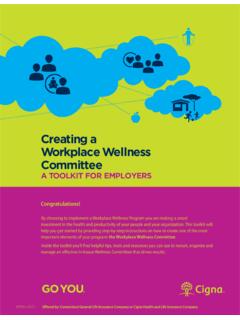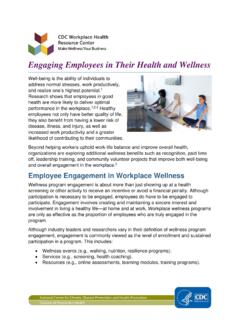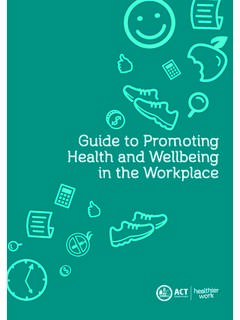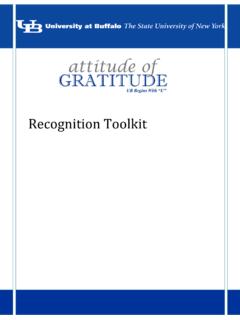Transcription of Sleep: An Important Health and Safety Concern at Work
1 CDC workplace Health Brief 1 Centers for Disease Control and Prevention National Center for Chronic Disease Prevention and Health PromotionMake wellness Your BusinessSleep: An Important Health and Safety Concern at WorkTo support optimal Health , experts recommend that adults get seven or more hours of sleep per However, recent estimates suggest about one-third of adults do not get enough sleep,2 which can prevent employees from meeting their Health and productivity goals and create Safety risks at work in the following ways: Poor sleep increases a person s risk for a variety of chronic For example, adults who sleep six or fewer hours per night are more likely to be obese and have diagnoses such as diabetes, coronary heart disease, and stroke than those who report seven to nine hours of In addition, poor sleep slows both physical and cognitive reaction times and accuracy,5 increasing risk for injury in the workplace .
2 Fatigue and poor sleep also contribute to productivity losses (a measurement of employee efficiency when completing required tasks) costing employers $1,967 per employee per year6 and adding up to approximately million lost working days of all sizes and industries can help their employees get more and better sleep through evidence-based workplace Health programs. This brief introduces strategies employers can adopt to encourage employees to evaluate and address their sleep hygiene, including the practices and habits necessary to achieve the recommended sleep quantity and quality and full alertness8 at home and work (when appropriate).Helping Employees Get the Sleep They Need: A Goal for All IndustriesEmployees work and home life can influence the amount and quality of sleep they get. As a result, getting enough sleep can be a problem for anyone, no matter the job.
3 People who work in industries that require shift work or spend long hours on the job are at a higher risk for sleep related disorders and report getting the least amount of Their lack of sleep may also put others at risk, especially when their responsibilities involve patient care or transportation. By addressing sleep as part of a workplace Health program, companies can increase Safety and make employees healthier and safer at the Centers for Disease Control and Prevention (CDC) workplace Health Resource Center to see whether a sleep intervention is right for your work Assessment. What information about my employees and my work site can I use to select an appropriate sleep intervention?2. Planning and Management. How will I empower and encourage my employees to participate?3. Implementation. What supports do I need to put in place to make the intervention a success?
4 4. Evaluation. How will I measure whether the intervention is successful and sustainable?CDC workplace Health Brief 2 There are several promising practices and evidence-based strategies to help employees improve their sleep. Interventions to reduce fatigue or tiredness are associated with decreased self-reported fatigue and increased reaction speed. Examples include encouraging physicians and nurses to take brief naps in the middle of long ,11 Training employees to recognize, report, and help colleagues who show signs of drowsiness can also be should consider whether one or more of the following strategies could benefit their work 1: Start With Education, Training, and AssessmentProviding employees with the information and tools to understand or improve their sleep is a great first step. Over time, a sleep intervention could include the following:1. Education.
5 Information about sleep can be incorporated into newsletters or posted in common areas for all employees to see. This may include recommendations from credible Health agencies about how much sleep is needed to remain healthy, sleep disorders, and how to achieve quality Training. Managers and employees can participate in trainings to recognize the signs and symptoms of fatigue, and learn what to do to reduce fatigue-related Assessment. Employers can offer their workers access to tools that evaluate their sleep and provide targeted advice based on their worker education, training, and assessment can also encourage behavior changes at home, which benefits employees and their families. The report, From Evidence to Practice: workplace wellness that Works,12 by the Institute for Health and Productivity Studies at the Johns Hopkins Bloomberg School of Public Health and the Transamerica Center for Health Studies and the toolkit, Working on wellness : Supporting Healthier People, Workplaces and Communities,13 by the Massachusetts Department of Public Health both include actionable recommendations for helping employers alert their workers to the importance of sleep and in-depth strategies to better address sleep.
6 Additionally, the American College of Occupational and Environmental Medicine created a detailed overview of these initial strategies to encourage healthy sleep and improve fatigue management in the 2: Incorporate Dedicated Breaks and Napping RoomsSleep does not need to take place at home. When working long shifts and late into the evening, brief naps and dedicated breaks can promote Health and reduce accidents and mistakes. For example, medical students who took brief sleep breaks reported decreased tiredness,10 while nurses who took a one-hour break in a quiet, restful environment were more alert during their shifts and felt less worn sites that incorporate napping or extended breaks feature two key attributes:1. Dedicated physical spaces with beds or comfortable chairs where employees can Schedules that allow for is also Important that the company culture supports and actively encourages breaks.
7 A common argument against a napping intervention is that the transition from sleep to wakefulness known as sleep inertia can be long and initially pose a risk. However, employees can return to their regular routine after a short (15-minute) period of recovery, particularly if naps are no more than 60 the examples described here relate to the Health care sector, they are just as relevant for other industries in which employees work more than 40 hours per week, work in shifts, or work overnight. Various industries, including the Department of Transportation,17 are beginning to publish recommendations or standards which allow for breaks and napping to address driver workplace Health Brief 3 Strategy 3: Recognize Tiredness and Pull Over SafelyAlertness is critical for driving safely. One in five fatal motor vehicle crashes involves a drowsy The National Transportation Safety Board reported that drowsy driving is probably the cause for over half of fatal crashes among commercial truck One of the most effective methods to prevent these accidents is to teach drivers how to recognize tiredness, encourage them to pull over safely, and allow them to take naps.
8 To encourage employees to follow these actions, managers can work with their drivers to effectively plan their trip routes and schedule times for sleep in places that are safe for them to pull Instead of taking breaks to rest, some truck drivers rely on caffeine and other stimulants to stay awake. However, this strategy should be used with caution, as there is a lag time between consumption and when the caffeine takes effect. When possible, follow the consumption of a caffeinated beverage immediately by a brief nap to help restore alertness. Lastly, as the stimulating effects from caffeine can last for as long as six to eight hours, experts recommend that individuals not consume caffeinated beverages in the hours before sleep is that have employees on the road whether they drive trucks, buses, or taxis can learn more about how to prevent drowsy driving on the CDC Sleep and Sleep Disorders Additionally, they can distribute CDC s handout Quick Sleep Tips for Truck Drivers22 to truck drivers as part of an education campaign that encourages identifying fatigue and pulling 4: Modify the workplace to Increase AlertnessIt is Important to balance workplace Health programming that promotes healthy sleep with environmental interventions that improve alertness.
9 Changes in at least three dimensions of the work environment are recommended to influence how tired or awake employees Lighting. Adjusting brightness and wavelength can maximize alertness and minimize adverse effects on later sleep quality. For example, increasing brightness to between 750 to 1,000 lux during night shifts can increase alertness and reduce Temperature. Maintaining the temperature at 68 degrees Fahrenheit promotes wakefulness; as the temperature increases, workers feel Noise. Continuous sound can act as a stimulant for employees and is most effective when music is and Effect of Fatigue,23 a video by the National Safety Council, outlines factors that contribute to fatigue. Additional information about fatigue risk management in the workplace , including the dangers of fatigue in the work site and how to address them, are outlined in this statement from the American College of Occupational and Environmental Medicine s Task Force on Fatigue Risk Sleep a Priority workplace Health programs can incorporate strategies aimed to improve sleep and reduce fatigue among employees.
10 These interventions can benefit employee Health directly by reducing on-the-job Safety risks and boosting productivity, and indirectly by decreasing the risk of developing chronic Health conditions. Employers win because their workers perform better when well-rested, and companies have seen reduced Health care spending costs in the longer term. CDC s workplace Health Resource Center is a one-stop shop for organizations to find credible tools, guides, case studies, and other resources to design, develop, implement, evaluate, and sustain workplace Health promotion programs. Check it out on CDC's workplace Health website for more resources on improving sleep for your workplace Health Brief 4 References1 Watson NF, Badr MS, Belenky G, Bliwise DL, Buxton OM, Buysse D, et al. Recommended amount of sleep for a healthy adult: A joint consensus statement of the American Academy of Sleep Medicine and Sleep Research Society.

















